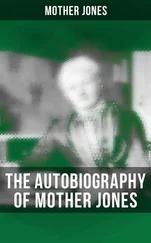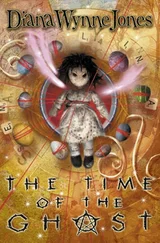Natural selection has never in its three-billion-year history produced a wheel, let alone a work of art; although it has managed to generate eyes, brains and other organs of great complexity. This is because of its grearest weakness, its plodding approach. A wheel, or a watch, needs some long-term ideas. To make either demands an intellectual leap that is beyond evolution. Natural selection has superb tactics, but no strategy — but tactics, if pursued without thought for cost, can get to places which no strategist would dream of.
Chapter Fourteen. COUSINS UNDER THE SKIN
Nineteen hundred and six was a successful year for the Bronx Zoo. A new exhibit was pulling in the crowds. An African Pygmy — Ota Benga by name — was in the same cage as an orang-utan. The exhibit caused an uproar, not because it was a shameful spectacle, but because it promoted the idea of evolution, that apes and humans were related. After a time, Ota Benga was released, in part as a result of his habit of shooting arrows at those who mocked him. He moved to Virginia, where he committed suicide a few years later.
The Bronx Zoo view of human evolution was once widespread. Linnaeus himself, who first classified animals and plants, put the idea well in 1754: 'All living things, plants, animals and even mankind themselves, form one chain of universal being from the beginning to the end of the world.' Many still see evolution as a smooth progress, a seamless transition from the primaeval slime to New Labour. Linnaeus recognised several distinct varieties among our own species. As well as the yellow, melancholic and flexible asiaticus there was europaeus, white, ruddy and muscular; americanus red, choleric and erect; and afer, black, phlegmatic and indolent.
The groups of humanity were at different stages. Africans were at the bottom, close to the apes, Asians somewhere in between, and white Europeans — needless to say — at the top. Victorian writers did not hesitate to make the idea clear. Robert Chambers, who wrote an influential book on evolution fifteen years before Darwin, claimed that 'Our brain passes through the characters in which it appears in the Negro, Malay, American and Mongolian nations, and finally is Caucasian. The leading characters, in short, of the various races of mankind, are simply representatives of particular stages in the development of the highest or Caucasian type. The Mongolian is an arrested infant, newly born.'
The theory that races are different has a long and ignoble history that has brought misery and death in its wake. It reached into medicine. Most people have seen children with Down's Syndrome, which is due to an error in their chromosomes. This was called by its discoverer, Langdon Down, 'Mongolism 1in his 1H66 paper 'Observation on an Ethnic Classification of Idiots' for what seemed to him a good scientific reason — these children had slipped a couple of rungs down the evolutionary ladder to resemble a lower form of life, the Mongols. A Japanese friend once told me that in his country the same condition is called Englishism. The idea is ridiculous. Down's Syndrome is due to a mistake in the transmission of a particular chromosome which is found in all groups of humankind and even in chimpanzees.
The history of race illustrates, more than anything else, the limitations of biology. Biologists have been talking — or shouting — about race for years. Ignorance and confidence have gone together. Politicians take scientists less seriously than scientists do, but the story of scientific racism, as it was known, is a grim one.
I have always felt a certain compassion for those whose ability to despise their fellow men is limited by the colour of their victim's skin. Genetics has — and should have — nothing to do with judgements about the value of one's fellow beings. In this sense, the biology of race has no relevance to racism, which is always happy to bend any scientific fact to its perverse ends. The genes do show that there are no separate groups within humanity. This may be reassuring, but should be beside the point. To depend on DNA to define morals is dangerous. Science evolves. It learns more, and theories alter. Our views on human biology have changed and may change again. The same should not be true of attitudes to human rights. Where biology stops and principles begin must not be forgotten.
Humankind can be divided into groups in many ways; by culture, by language and by race — which usually means by skin colour. Each division depends to some extent on prejudice and, because they do not overlap, can lead to confusion. In 1987, a secretary from Virginia sued her employer for discrimination as she was black. She lost the case on the grounds that, as she had red hair, she must be white. She then worked for a black employer and, undaunted by her earlier experience, sued him for picking on her as she was white. She lost again as the court found that she could not be white as she had been to a black school.
Nations, too, differ in how they define their racial affinity. In South Africa just one African ancestor, even in the distant past, once meant ejection from the white race. In Haiti, in contrast. Papa Doc proclaimed his country to be a white one, as almost everyone — dark though their skin might be — had a European ancestor somewhere. Other countries developed fine distinctions based on colour. Latin America once recognised more than twenty races. The offspring of a Spaniard and an Indian was a mestizo, that of a mestizo and a Spaniard a castizo, a Spaniard and a negro a mulatto, a mulatto and a Spaniard a morisco, a morisco and a Spaniard an albino, an albino and a Spaniard a torna atras and so on in a lengthy, hair-splitting and subjective series. Races were supposed to be distinct because they descend from different ancestors. Ham, Shem and Japhet, the sons of Noah, were popular candidates. Anthropology began with the- search for perfect examples of each lineage, for racial types. Africans, Europeans and Asians were seen as separate versions of humankind. Perhaps, its students thought, every race was once a pure and unpolluted line, secure in its ancestral homeland. Only in modern times was that purity sullied by interbreeding. Race mixture was against nature (exceptions were allowed in emergency, as when Saints Cosima and Damian, with divine help, transplanted a black leg onto a white patient).
If the peoples of today are a confused mix of what was once a series of pure races, it might still be possible to identify perfect specimens of the original groups. That unproven idea led human biology round in circles for centuries in a futile attempt to find divisions into which people could be classified. Its early days were spent in a useless search for homelands and migration routes. Harvard University was at the centre of the search for the archetype. Two suitably discreet nude statues once stood in the Pea-body Museum of Anthropology. They were based on measurements made in the 1930s on dozens of male and female students. Average these out, the argument went, and one would produce an image of the ideal Harvard undergraduate — the highest form of human being. A remnant of this philosophy survives in the Miss World Contest whose judges try, and fail, to find an objective definition of the perfect woman.
Racial types were usually identified from skulls. The word 'Caucasian' reflects a claim that the skull which best represented white-skinned people came from the Caucasus Mountains so that — perhaps — the white race had spread from those remote fastnesses. Years were wasted in measuring skulls rather than thinking about what might make them different. The most popular yardstick was the cephalic index, the ratio of the length and breadth of the head. Tens of thousands of crania from different parts of the world were measured in an attempt to sort out their ancestral stocks.
Читать дальше
Конец ознакомительного отрывка
Купить книгу












